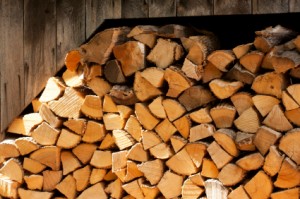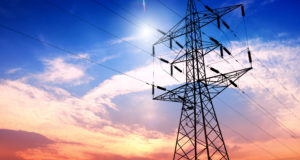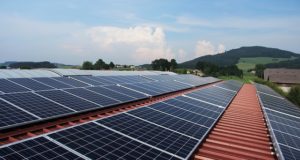 Tapping into power is one thing, but sustaining the energy and using it full time is quite another. Regardless of the type of energy source you use (ideally more than one in conjunction with each other to create a genuinely self-sufficient program), you will want to store excess produced energy to be able to access it in times where direct production is unavailable. Furthermore, emergencies and certain specific situations may require a larger amount of energy to be used (an example might be a home addition or remodel). Many direct sources of energy cannot produce large enough amounts of energy to start large machinery like mills, lathes, large saws, or machine shop tools. Having planned for these contingencies and stored a sufficient amount of energy on hand to accomplish your tasks is what separates your lifestyle from those of the off-grid families forced into it by some catalyst other than choice. Having energy at your fingertips can improve the quality of life exponentially.
Tapping into power is one thing, but sustaining the energy and using it full time is quite another. Regardless of the type of energy source you use (ideally more than one in conjunction with each other to create a genuinely self-sufficient program), you will want to store excess produced energy to be able to access it in times where direct production is unavailable. Furthermore, emergencies and certain specific situations may require a larger amount of energy to be used (an example might be a home addition or remodel). Many direct sources of energy cannot produce large enough amounts of energy to start large machinery like mills, lathes, large saws, or machine shop tools. Having planned for these contingencies and stored a sufficient amount of energy on hand to accomplish your tasks is what separates your lifestyle from those of the off-grid families forced into it by some catalyst other than choice. Having energy at your fingertips can improve the quality of life exponentially.
When discussing energy storage, most people think of specialized battery banks and fuel cells. However, people have been storing energy for a long time, much longer than modern batteries have existed. Physical products such as natural gas, diesel fuel, and even wood and charcoal are all options to consider when trying to find a way to stockpile energy along with food and water.
Compressed Natural Gas (CNG)
When living off the grid and using alternative, renewable, or sustainable energy sources, it is not about simply finding energy to fuel your home. You may need to use these types of energy to power a vehicle for transportation. Compressed natural gas has become a very efficient means of transport in large fleet vehicles, and it is starting to become more popular in smaller consumer models. Many people do not prefer this method because it can produce greenhouse gases, but it is actually a very renewable and sustainable source of energy. From a practical perspective, conservatism from individuals living off the grid comes more from their holistic and sustainable mindset, rather than one type of implementation. It could be argued that some of the best passive conservationists are off-the-grid users, as they contribute virtually nothing to the growing carbon footprints of the major grid energy suppliers. Even those living off the grid without the slightest desire or care for ecological conservatism still likely do more for the movement than most of the mainstream public still tied to the grid. The usage of CNG has jumped dramatically in recent years as many companies are considering the use of the energy in company vehicles and other countries are exploring its use in other areas. This is a natural and sustainable resource that could assist in solving how much of our natural energy is wasted, and at the same time reducing active costs for the end user. Natural gas reserves are at all time highs, costs are at all-time lows, and availability is rampant.
Specialized tanks can be built for CNG and LNG (liquid natural gas), though adaptors can also be introduced onto grid-tied systems to harvest the energy source at all-time low prices. While it isn’t completely grid independent, it is at historically low prices in the midst of all-time overall high cost structure for other fuels/energy sources. BTU’s of natural gas tend to be 30 to 45 percent lower than some of the other fuel sources including propane and gasoline, so for vehicle and home usage, tank size should reflect the difference in efficiency/output. Tanks can be had in above and belowground versions and as big as a few thousand gallons for residential owners.
All The Information You’ll Need To Move Off The Grid…
Diesel Fuel
While this option may not be the best for renewable or sustainable resources, it is actually a way to produce your own energy without having to be connected to the grid. Diesel generators are very easy to maintain and operate and can be used to either actively power your home or to charge a battery bank. Diesel generators are unique in that they produce a large amount of energy for a relatively low cost, while also creating active energy without being grid tied. Using a generator allows for an almost foolproof option and as an incredibly proven backup option for other methods which may be less consistent. Again, this is not a renewable and sustainable resource, but it is a way for you to produce the power that you need without help from the grid. It would be rare to find a rural living situation without access to a diesel generator, let alone a dedicated off-the-grid family without one: simply put, they provide an instant and reliable source of on demand power.
Storage tanks are available at well-known suppliers like Northern Tool or Tractor Supply for between $300 (25-75 gallon tanks) and $1000 (250-300 gallon tanks), which should give you enough range for your needs. They are relatively inexpensive, considering you will likely never need to purchase a new one after your initial purchase. Filling these tanks however, may not be quite as “inexpensive.”
Charcoal and Wood
When it comes down to producing energy and not being connected to the grid, we generally place a high value on energy that will allow us to operate the basic necessities of the home. Cooking food is important and will require the use of energy on some level; one way for you to do this is to use natural charcoal and/or wood as a cooking fuel source. Most people love the open flame of the outdoors to help with their cooking, but this may be a little different. Specifically, lump unprocessed charcoal is an option for people that are looking to be able to cook with natural resources. This is not the same stuff that we are accustomed to buying at the store, but it works in much the same way. You can actually create your own by burning wood (which is how all charcoal is basically made) and then allowing the heat to be contained in the wood. This takes longer to begin heating but will still cook the same once it begins to burn. Whole home boilers are available in both formats, and for many years cast iron wood-burning stoves have been heating entire homes with incredible efficiency. Off-the-grid energy usage is usually an amalgamation of many techniques and raw resources, combining to make the most efficient platform and the best uptime guarantee for the energy resources. Wood is a good starting point and an even better backup plan, as it like provides a guaranteed energy source without grid reliance at a cost that rivals or beats grid-supplied options. For many years over the last century, wood and charcoal have been chosen by self-sufficient users as a way to avoid the grid, but for thousands of years, wood and charcoal made up the “grid.” Without question, these options have a place in your overall energy portfolio for their reliability, cost effectiveness, and sustainability.
A cord of oak wood is typically between $100 and $275, depending on where you live. A cord of oak will generally be enough to keep a whole home warm and food cooked for about a third of a winter in an area with a long winter if used in very efficient stoves and boilers with good insulation in the structure. Most people go through three and five cords of hard/soft wood mixed firewood in a long winter, though your individual mileage may vary based on many things, including insulation, other energy/heat sources, efficiency of equipment, dryness of wood, and quality/type of wood. Wood will need to be stored in dry areas away from excess moisture or covered from exposure to water, snow, etc. Ventilation will be important too if you want to avoid mold.
Generally speaking, 600 pounds of charcoal can be had in most locales for around $350-450 in twenty-pound bags on a pallet. Charcoal for barbequing might consume twenty to forty pounds for a weekend of smoking meat (forty to a hundred pounds of meat) or between five and fifteen pounds for a few hours of cooking or grilling. If used as a primary heat source for food, lump charcoal by the pallet will likely last you sixty to one hundred meals worth of cooking or about one to three months of service (on the low side). It seems expensive, but the additional benefits may outweigh the extra cost, or bring it in line with mainstream methods if proper planning and efficient equipment is employed.
©2012 Off the Grid News
 Off The Grid News Better Ideas For Off The Grid Living
Off The Grid News Better Ideas For Off The Grid Living




